
As we head into spring, allergy season is upon us. Pollen, dust and other allergens can easily find their way into your home, causing discomfort for you and your family. But the good news is, with a thoughtful cleaning routine, you can reduce allergens and create a healthier living environment —without resorting to harmful chemicals.
Bliss Home Care are passionate about green cleaning and helping you maintain a home that’s safe for your family, pets and the planet. In this blog, we share eco-friendly tips to reduce allergens and keep your home fresh and clean as part of our spring cleaning blog series.
Dust mites are one of the most common indoor allergens, and they thrive in dust-filled areas like furniture, shelves and curtains. Instead of chemical-laden dusting sprays, use a damp microfiber cloth to trap and remove dust effectively. Microfiber is naturally static-charged, which helps it attract and hold onto dust particles without the need for any cleaning products.
Green Cleaning Tip:
Wash your microfiber cloths in hot water after use to ensure they’re free of dust and allergens for the next cleaning session.
Carpets, rugs and upholstered furniture can easily trap allergens like pollen, pet hair and dust. Regular vacuuming is key to reducing these allergens, but the type of vacuum you use makes a difference.
Look for one equipped with a HEPA filter, which captures small particles and prevents them from being recirculated into the air. You may like to read A Guide to Maintaining Carpets for more information.
Green Cleaning Tip:
If possible, opt for a bagless vacuum cleaner to reduce waste. Also, avoid chemical-based carpet deodorisers — instead sprinkle baking soda on carpets before vacuuming for a natural deodoriser that neutralizes odours without harmful chemicals.

Allergens like dust mites and pet dander accumulate in bedding, pillowcases, and curtains. To keep them under control, wash these items at every few weeks in hot water to kill dust mites and reduce allergens.
Green Cleaning Tip:
Choose natural, fragrance-free laundry detergents and avoid fabric softeners that contain synthetic chemicals. If you prefer a fresh scent, add a few drops of essential oil, such as lavender or tea tree to your laundry cycle for a natural touch.
Allergens like mould and dust mites thrive in humid environments. Keeping indoor humidity between 30-50% helps inhibit their growth. Use a dehumidifier to maintain proper ventilation.
Green Cleaning Tip:
Houseplants like peace lilies or spider plants not only improve air quality but can also help maintain balanced humidity in your home. Read more about the Benefits of Indoor Plants.

Pets are often a source of allergens in the home, as pet hair can trigger allergies. Regular grooming of your pets (preferably outdoors) can help reduce shedding. Also, clean pet bedding and toys frequently to reduce allergens.
Green Cleaning Tip:
Use natural pet shampoos that are free from harsh chemicals and artificial fragrances. This helps not only to reduce allergens but also protects your pets’ skin and fur.
Your mattress can be a hotspot for dust mites and allergens. Sprinkle baking soda across your mattress, let it sit for 15 to 30 minutes, and then vacuum thoroughly. This helps neutralise odours and remove dust mites without any chemicals.
Green Cleaning Tip:
For an extra boost of freshness, mix a few drops of essential oil with the baking soda before sprinkling it on the mattress. Lavender or eucalyptus are great choices for a calming, allergen-free sleep environment.
Instead of using artificial air fresheners or aerosol sprays, which often contain harmful chemicals, focus on improving your home’s air quality naturally. Open windows frequently for fresh air circulation and consider investing in a natural air purifier. Certain houseplants, such as aloe vera, snake plants, and English ivy, can help filter out toxins and improve indoor air quality.
Green Cleaning Tip:
Place a bowl of baking soda in musty rooms to naturally absorb odours and reduce allergens, leaving the air fresh and clean.
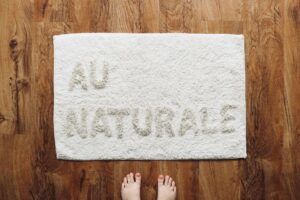
Pollen and other allergens can easily be tracked into your home on shoes and clothes. Place doormats at every entrance and encourage family members and guests to remove their shoes upon entering the house. This simple step can drastically reduce the amount of pollen and outdoor contaminants brought indoors.
Green Cleaning Tip:
Opt for washable mats made from natural fibres, and vacuum them regularly to keep allergens at bay.
Spring cleaning is the perfect time to reduce allergens in your home while maintaining a commitment to green, non-toxic methods. With these green cleaning tips, you can create a healthy, allergy-free environment for your family and pets, without relying on harmful chemicals. By using natural cleaning solutions, adopting good habits and focusing on air quality, your home will feel fresh, clean, and safe throughout the allergy season and beyond.

Spring is the season of renewal, making it the perfect time to refresh and revitalise your home with spring cleaning. As a cleaning company that prioritises green cleaning methods and products, we believe that a deep clean doesn’t need to come with harmful chemicals or environmental impact. With natural, eco-friendly solutions, you can achieve a sparkling clean home while protecting your and your family’s health, and our planet.
In this guide, we share step-by-step tips for spring cleaning your home the green way. That means using non-toxic products and sustainable methods to create a healthier living environment.
Before you begin spring cleaning, take time to declutter each room. Sort through items you no longer use and decide whether they can be donated, recycled or repurposed. A clutter-free space is easier to clean and helps create a more serene and functional living environment.
Eco-Friendly Tip: Donate gently used items to local charities instead of throwing them away. This helps reduce waste and supports sustainability.

Swap out chemical-laden cleaning products for natural alternatives when you are spring cleaning. Natural cleaning products are just as effective and much safer for you, your family and the environment. Ingredients such as vinegar, baking soda, lemon juice and essential oils can handle most of your cleaning needs.
Eco-Friendly Tip: Make your own multipurpose cleaner by mixing equal parts water and vinegar, then add a few drops of your favourite essential oil for a pleasant scent.
Instead of using harsh carpet shampoos or sprays, freshen your carpets and upholstery with baking soda. Sprinkle baking soda over the surface, let it sit for 15 to 30 minutes to absorb any odours, then vacuum thoroughly. You can also add a few drops of your favourite essential oil for a natural, fresh scent. For more tips on carpets, you may like to read our article, A Guide to Maintaining Carpets.
Eco-Friendly Tip: Regular vacuuming helps reduce allergens like dust and pet hair. Be sure to use a vacuum with a HEPA filter to capture smaller particles for better indoor air quality.
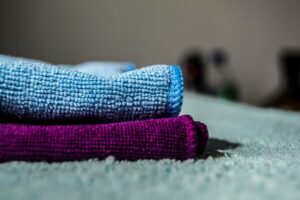
Instead of disposable cleaning products, choose reusable tools such as microfiber cloths, washable mop heads and natural sponges. These tools are not only more environmentally friendly but also often more effective at trapping dust and dirt.
Eco-Friendly Tip: Microfiber cloths can be washed and reused hundreds of times, making them a sustainable alternative to paper towels. They also require fewer cleaning products to work effectively.
One of the simplest ways to refresh your home is to let in some fresh air while you are spring cleaning. Open windows and doors to circulate the air and reduce indoor pollutants. This is especially important during and after cleaning, as it helps clear away any lingering dust or odours.
Eco-Friendly Tip: Houseplants like aloe vera, spider plants and peace lilies are natural air purifiers. Add a few green plants to your indoor spaces to help keep the air clean and fresh all year long.
The kitchen is often a hub of activity, and spring is the perfect time to give it a thorough, eco-friendly clean. Use a vinegar and water solution to wipe down countertops, cabinet doors and appliances. For baked-on grime in your oven, sprinkle baking soda on the surface, spray with water, and let it sit overnight before wiping clean. For more natural oven cleaning tips, read our article Oven Cleaning Without the Toxic Chemicals.
Eco-Friendly Tip: Avoid using single-use plastic or paper towels. Instead, invest in washable, reusable microfibre cloths for kitchen cleaning. Not only are they better for the environment, but they’re also more cost-effective in the long run.
Spring cleaning your bathroom doesn’t require harsh chemicals. In fact, you can use a mixture of vinegar and baking soda to scrub away soap scum and grime from sinks, bathtubs and tiles. For a sparkling toilet, pour a cup of vinegar into the bowl and let it sit for 10 to 15 minutes before scrubbing.
Eco-Friendly Tip: To prevent mould in your bathroom, ensure proper ventilation by using exhaust fans or opening a window during and after showers. Wiping down surfaces with a microfiber cloth also helps reduce moisture buildup. You might also like to read How to Treat Mould Naturally.
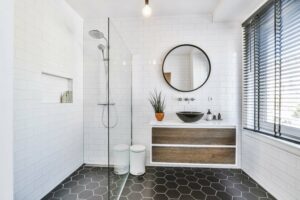
Spring cleaning is a great opportunity to focus on reducing household waste. Instead of tossing old items, consider upcycling them or finding eco-friendly disposal methods. For example, old t-shirts can be turned into rags and glass jars can be repurposed for storage.
Eco-Friendly Tip: When buying new cleaning supplies, look for products with minimal packaging or opt for refills to reduce plastic waste.
Spring cleaning is about more than just making your home look great… it’s also about creating a healthy and happy living environment. By embracing green cleaning methods, you can ensure your home is free from toxic chemicals, while also minimising your impact on the planet. With a few simple swaps and eco-friendly practices, your spring cleaning routine will leave your home sparkling, naturally. Click here to access our Room by Room Spring Cleaning Checklist.
If you struggle to find the time to clean your home regularly or give it a once-off spring clean, enquire here. The Bliss Home Care Services team are dedicated to keeping your home clean and healthy with our detailed spring cleaning service.
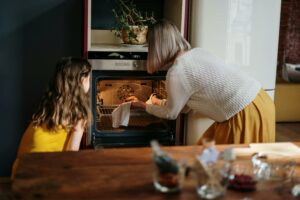
Oven cleaning can be a daunting task, especially when faced with stubborn grease and baked-on grime. While many commercial oven cleaners promise quick results, they often contain harsh chemicals that can be harmful to your health and the environment.
The good news is, that you don't need to rely on toxic products to achieve a sparkling clean oven. In this blog, we'll explore natural, effective methods for oven cleaning, using safe, eco-friendly ingredients you likely already have at home. Say goodbye to toxic chemicals and fumes, and hello to a clean, fresh oven with our simple, non-toxic, oven cleaning guide.
5-Step Guide to Natural Oven Cleaning
Here’s our step-by-step guide to naturally cleaning your oven.
Cleaning Supplies
To get started you will need some oven cleaning supplies including:
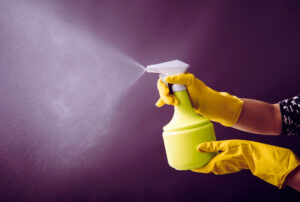
Natural Cleaning Solution
This natural cleaning solution is easy and simple to make. It’s a great way to minimise toxic chemicals in your home and protect your health and the environment.
Simply place the ingredients into a spray bottle, gently shake the mixture and you have a natural cleaning solution at your fingertips.
Step 1: Preparation
Step 2: Soaking
Step 4: Natural Cleaning Solution

Step 5: Rinse and Replace
Oven cleaning doesn’t need to be costly or fill your home with toxic chemicals. You only need to read the warning labels on oven cleaners to identify how unsafe and toxic they are. Our aim is to use the most natural and safe cleaning methods and solutions to keep your home sparkly clean and safe for the whole family, pets included. For more Natural Cleaning Tips for the Kitchen, click here.
There is a growing awareness of the importance of environmentally friendly practices in all aspects of our lives and home environment, including cleaning. Green cleaning, also known as eco-friendly or sustainable cleaning, involves using products and methods that minimise environmental impact and promote health and well-being. If you’d like to read more about the benefits of green cleaning for both your health and your home, and why it's an essential practice for today's conscientious individuals, read our article, Green Cleaning: How it Benefits Your Health and Home.
If you are limited in time and would like to arrange a quote for a regular home cleaning service or a once-off (spring) clean, enquire here. The Bliss Home Care Services team are dedicated to keeping your home clean and healthy with our certified green cleaning products.
 Winter brings a cozy atmosphere to our homes, but it also comes with challenges such as increased indoor time, poor indoor air quality, flu season and wet weather. Keeping your home clean and healthy in winter can be easier than you think.
Winter brings a cozy atmosphere to our homes, but it also comes with challenges such as increased indoor time, poor indoor air quality, flu season and wet weather. Keeping your home clean and healthy in winter can be easier than you think.
Ensure you’re practising frequent handwashing to prevent the spread of germs. Keep hand sanitizers and antibacterial soap in easily accessible locations around your home such as near sinks, basins and entryways.
As part of your home cleaning routine, wipe down frequently touched surfaces like doorknobs, light switches and remote controls with disinfectant wipes or a solution of water and vinegar. Do this regularly to reduce the spread of germs and reduce the risk of illness.
Place doormats at the front and back entrances of your home and encourage family members and guests to remove their shoes before entering. This helps reduce the amount of dirt, debris and germs brought into your home.
We tend to keep our doors and windows closed when it’s cold, however opening them for 5 to 10 minutes each day can make a significant impact to the indoor air quality in your home. You can also use an air purifier to reduce allergens and pollutants. Ensure you change HVAC filters regularly and consider adding houseplants to help purify the air. Learn more about the Benefits of Indoor Plants and the top 5 recommended plants for greatest health benefits.
Dust furniture, shelves and any other surface that collects dust regularly using a microfiber cloth. Pay special attention to areas that tend to accumulate dust, such as ceiling fans, window sills and skirting boards. Dust can exacerbate respiratory and allergic reactions and usually contains a mixture of tiny particles, including dead skin cells, pet hair, pollen, dust mites and other allergens. When inhaled, these particles can irritate the respiratory tract, trigger allergies and lead to symptoms such as sneezing, coughing and itchy eyes. Prolonged exposure to dust can also contribute to chronic respiratory issues and other health problems so keep your home dust-free as much as possible.
Winter weather can bring mud and moisture to your carpeted floors. Vacuum your carpets and rugs frequently to remove any debris and dirt and consider having them steam cleaned every 6 to 12 months to remove deep-seated dirt and allergens. You may like to read A Guide to Maintaining Carpets to enhance the longevity of your carpets.
Maintaining balanced humidity levels can help prevent the growth of mould and mildew, which thrive in damp conditions and can cause respiratory issues and allergic reactions. Balanced humidity also helps keep the skin hydrated and reduces the risk of respiratory infections and skin irritations, which are common in dry winter air. To maintain optimal humidity levels ensure your home is well ventilated or you can use a humidifier to enhance humidity levels.
Wash sheets, pillowcases and frequently used blankets at least once a week in hot water to kill germs and dust mites. We recommend using hypoallergenic laundry detergent to reduce skin irritations. Also, ensure the bedding is completely dry before placing them back on your bed or storing them in cupboards to prevent any growth of mould and mildew.
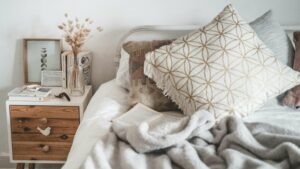
Wet and dirty clothes can pile up quickly in winter. When damp or wet clothes are in your washing basket for prolonged periods of time it can lead to mould and mildew growth. After washing, ensure the clothes are thoroughly dry before storing them.
Remember to clean and disinfect your cleaning tools to maintain optimal hygiene and cleanliness throughout your home. This includes disinfecting items such as sponges, dusters, cleaning cloths, mops and vacuum filters, to prevent spreading germs within your home. A good way to naturally disinfect cleaning tools is to use warm/hot soapy water with a mild detergent or a natural disinfectant such as white vinegar or essential oils (eucalyptus or tea tree oil). For more information you may like to read Green Cleaning: How it Benefits Your Health & Home.
By incorporating these tips into your cleaning routine, you can maintain a clean and healthy home environment throughout the winter season, ensuring comfort and well-being for you and your family. If you are finding that your time is limited and you would like to arrange a quote for a regular home cleaning service or a once-off (spring) clean, enquire here. The Bliss Home Care Services team are dedicated to keeping your home clean and healthy in winter with our certified green cleaning products.
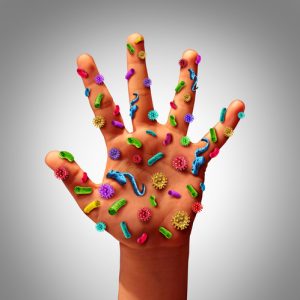
In this blog, we explore the most common harmful chemicals found in cleaning products and provide tips for safer cleaning practices. The best way to keep yourself and your home and family safe is to learn and educate yourself on the toxicity of chemicals. Avoid using these cleaning chemicals and replace them with safer solutions and practices to safeguard your home and family.
Here are ten of the most common harmful chemicals found in household cleaners that are often found on supermarket shelves and their potential health impacts.
Found in: Glass cleaners, bathroom cleaners and polishing agents.
Health Risks: Can irritate the skin, eyes, throat, and lungs. Prolonged exposure can lead to chronic respiratory issues and is particularly dangerous for individuals with asthma.
Found in: Disinfectants, toilet bowl cleaners and mould removers.
Health Risks: Can cause skin burns, eye damage and respiratory irritation. Mixing bleach with ammonia or acidic cleaners can produce toxic chloramine or chlorine gas, which can be fatal.
Found in: Scented products like air fresheners, dish soaps, and even toilet paper.
Health Risks: Linked to hormone disruption, reproductive issues, and developmental problems in children. Exposure is often through inhalation or skin contact.
Found in: Antibacterial soaps, detergents and hand sanitizers.
Health Risks: Can contribute to antibiotic resistance and is a suspected endocrine disruptor. It may also affect thyroid function and contribute to liver toxicity.
Found in: Disinfectant sprays, wipes and fabric softeners.
Health Risks: It can cause skin irritation, respiratory issues, and has been linked to asthma development. Overuse can contribute to the development of antibiotic-resistant bacteria.
Found in: Window cleaners, kitchen cleaners and multipurpose cleaners.
Health Risks: Can cause sore throat, narcosis, pulmonary oedema and severe liver and kidney damage with prolonged exposure.
Found in: Some air fresheners, disinfectants and furniture polishes.
Health Risks: This is a known carcinogen that can cause respiratory problems, skin irritation, and has been linked to cancer with long-term exposure.
Found in: Bleach, mildew removers and toilet bowl cleaners.
Health Risks: It can cause skin and eye irritation, respiratory issues, and when mixed with other chemicals like ammonia, it releases toxic gases that can cause severe respiratory damage or death.
Found in: Oven cleaners, drain openers and industrial cleaners.
Health Risks: Highly corrosive and can cause severe burns to skin and eyes, respiratory issues if inhaled, and damage to the gastrointestinal tract if ingested.
Found in: Dry-cleaning solutions, spot removers and carpet cleaners.
Health Risks: Classified as a probable human carcinogen. Long-term exposure can affect the central nervous system, liver and kidneys.
5 Tips for Safer Cleaning
Cleaning your home is essential for maintaining a healthy and comfortable living environment. By making informed choices and adopting healthier cleaning habits, you can protect yourself and your loved ones while keeping your home spotless.
Always read product labels and be aware of the ingredients, especially if you are purchasing cleaning chemicals from supermarket shelves. The manufacturer won’t always have your best interest at heart.
Consider using natural cleaning products like vinegar, baking soda, lemon juice and essential oils in your home. Bliss Home Care Services only uses GECA certified and approved green cleaning products. These products are also available for purchase, click here for more information.
Ensure good ventilation when using cleaning products to minimise inhalation of fumes. Opening windows and doors for 10 minutes each day also keeps your home fresh, eliminates bacteria and improves indoor air quality.
Always wear gloves when cleaning, and if necessary wear a mask to protect your skin and respiratory tract and glasses to protect your eyes. Prevention is always better than dealing with the after-effects of chemical burns or skin irritation. Ensure any cleaning products and chemicals are stored in a safe place, away from young children and pets.
Avoid mixing cleaning chemicals at all times, especially bleach and ammonia, to prevent the release of toxic gases. Seek medical attention if you feel unwell or dizzy if you have been around chemical cleaning products.
You may also like to read our article, Benefits of Green Cleaning for Your Health and Home and why it’s an essential practice for today's conscientious individual.
The Bliss Home Care Story
The origins of Bliss Home Care go back well before we moved into the house cleaning industry. It was during our careers in community service and health services that we understood the pleasure we get from nurturing and the importance of the ‘small stuff’ to improving people’s lives.
A clean house nurtures the soul. It creates an air of freedom. And of course it provides free time to spend with family and friends or doing activities we love. We have always chosen green cleaning products that are locally made and independently approved and certified by GECA (Good Environmental Choice Australia). Read more about our brand story here.

Kitchens are often the heart of the home. It’s where we come together with friends and family to enjoy food preparation, cooking, baking and socialising. It can get messy but that’s part of the fun! In this blog, we share 10 natural kitchen cleaning hacks to ensure your kitchen is always looking its best and ready for the next meal.
As you may know, we are incredibly passionate about green cleaning – it’s been one of our ethos since we started our home cleaning business. You may like to learn more about Green Cleaning and How it Benefits Your Health and Home. Making small changes to the cleaning products you use in your home can create longer and healthier life choices for you, your family, your pets, the environment and our future generations.
These natural kitchen cleaning hacks use common household items and simple techniques to tackle kitchen cleaning tasks effectively. Incorporate these hacks into your kitchen cleaning routine to save time and effort while achieving excellent results.
Cut a lemon in half and dip it in salt. Use the lemon as a scrubber to clean stainless steel sinks and tapware. The acidity of the lemon helps dissolve grease and stains, while the salt acts as a gentle abrasive for stubborn spots. Rinse thoroughly and wipe it dry with a lint-free cloth for sparkly results.

Fill a microwave-safe bowl with water and add a few slices of lemon or a tablespoon of vinegar. Microwave the bowl on high for 2-3 minutes until the steam loosens food splatters and stains inside the microwave. Simply wipe the interior with a damp cloth for a clean, hygienic and fresh-smelling microwave.
Pour a cup of baking soda followed by a cup of vinegar down the drain. Let the mixture fizz for a few minutes to break down grease and odours. Turn on the tap to flush the drain with warm water. This will clear away any debris and keep your kitchen sink drain flowing smoothly.
Place used coffee grounds in a bowl and leave them on your countertop, in the fridge or freezer to absorb any lingering odours. Coffee grounds are natural deodorisers that can help neutralise strong smells and keep your kitchen and fridge smelling fresh.
Mix a few drops of dish soap with warm water in a spray bottle to create a homemade grease-cutting cleaner. Use this grease-cutting solution to wipe down a greasy stove, rangehood, backsplashes and cabinet doors for a sparkling clean kitchen.
Fill a heatproof dish with water and place it on the bottom rack of a cold oven. Heat the oven to 120°C and let the steam soften baked-on spills and grease for 20-30 minutes. Once the oven has cooled down, wipe away loosened debris with a damp cloth or sponge.

Place a cup of vinegar on the top rack of your dishwasher, and sprinkle baking soda on the bottom of the dishwasher. Run the dishwasher on a hot cycle for an effective and hygienic dishwasher. The vinegar disinfects while the baking soda freshens. Our tip is to take a before and after photo to notice the difference.
Microfibre cloths are one of our favourite cleaning items. You can use a microfiber cloth dampened with water to clean and polish stainless steel appliances, glass surfaces, and countertops without streaks or lint. Microfiber cloths are highly effective at trapping dirt and grime for a spotless finish. Best of all, you can put them in the wash and use them over and over.

Your rubbish bin can get a bit smelly so give it a good wash every few days to keep it fresh and clean. You can also sprinkle baking soda in the bottom to neutralise any odours and add your favourite essential oils such as peppermint, lavender or citrus for a fresh scent.
After cleaning your kitchen, sweep the floor to remove any loose crumbs and debris. Mop the floor with a solution of warm water and a small amount of vinegar to disinfect your floors and leave them sparking and smelling fresh.
While cleaning may not be your favourite chore, it’s something we must all do to keep our home fresh and clean. While there are hundreds of toxic cleaning products on supermarket shelves the ones that work most effectively, and more importantly are not harmful to your health or the environment, are those you have in your pantry or cupboards at home. For more natural cleaning hacks, click here.
In recent years, there has been a growing awareness of the importance of environmentally friendly practices in all aspects of our lives and home environment, including cleaning. Green cleaning, also known as eco-friendly or sustainable cleaning, involves using products and methods that minimise environmental impact and promote health and well-being.
In this blog, we explore the benefits of green cleaning for both your health and your home, and why it's an essential practice for today's conscientious individuals.

Traditional cleaning products often contain harsh chemicals and toxins that can be harmful to both humans and the environment. You only need to read the warning labels on the products to be alarmed at how toxic they can be. By switching to green cleaning products made from natural ingredients you can reduce your exposure to these harmful substances and protect your health, the health of your family, pets and the environment.
Many commercial cleaning products contain volatile organic compounds (VOCs) that can pollute indoor air and contribute to respiratory problems such as asthma and allergies. Green cleaning products are free from these harmful chemicals, helping to improve indoor air quality and create a healthier living environment for you and your family. To further promote indoor air quality open doors and windows daily to circulate fresh air. You may also like to read our article, Benefits of Indoor Plants which outlines the benefits of indoor plants and which plants are best.
Children and pets are particularly vulnerable to the effects of toxic chemicals found in traditional cleaning products. Green cleaning products are safer and gentler, making them a better choice for households with young children and furry friends who may come into contact with cleaned surfaces.

Green cleaning products are made from renewable, biodegradable ingredients that have minimal impact on the environment. By choosing eco-friendly products and methods, you can reduce your carbon footprint and contribute to a healthier planet for future generations.
Harsh chemicals in traditional cleaning products can also damage surfaces over time, leading to wear and tear that requires costly repairs or replacements. Green cleaning products are gentler and less abrasive, helping to preserve the integrity of surfaces such as countertops, floors and appliances.
Contrary to popular belief, green cleaning doesn't have to break the bank. Many eco-friendly cleaning products are affordable and can be made at home using simple ingredients like vinegar, lemon juice, and olive oil. Additionally, the long-term benefits of green cleaning, such as improved indoor air quality and reduced maintenance costs, can result in savings over time.

Green cleaning is more than just a trend. It’s a responsible choice that benefits both your health and the environment. Making the switch to green cleaning is easier than you may think. Many of us choose to buy chemical cleaners without giving them a lot of thought.
However, you may be surprised how readily available natural and eco-friendly products are. They can easily be incorporated into your regular routine. Natural products are often more cost-effective and do a better job than chemical alternatives. Make the switch to green cleaning and reap the rewards of a healthier and happier home. In our article, 10 Natural Home Cleaning Hacks, you’ll find some great tips on how to incorporate some simple ideas and household products into your regular cleaning routine.
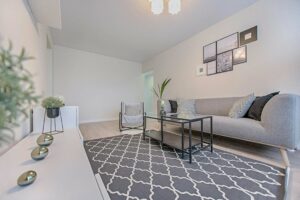 Decluttering your home can feel like a daunting task, but breaking it down room by room can make the process more manageable and less overwhelming. When you declutter your home, it also offers a range of benefits that positively impact your physical health, mental well-being, productivity, and overall quality of life. It's a simple, yet powerful, way to create a more harmonious and fulfilling living environment.
Decluttering your home can feel like a daunting task, but breaking it down room by room can make the process more manageable and less overwhelming. When you declutter your home, it also offers a range of benefits that positively impact your physical health, mental well-being, productivity, and overall quality of life. It's a simple, yet powerful, way to create a more harmonious and fulfilling living environment.
In this guide, we'll take you through each room of your home, offering practical tips and strategies to help you declutter effectively and create a more organised living space.
Living Room
Kitchen
Begin by emptying cabinets and drawers, discarding expired food items, and donating or getting rid of kitchen gadgets or appliances you no longer use.
Bedroom
Bathroom
Home Office / Study
Laundry
Benefits of Decluttering Your Home
Decluttering your home offers a multitude of benefits, both practical and psychological. When your home is organised and free of clutter you will find the space more calm, inviting and relaxing, allowing you to enjoy your haven so much more!
Some additional benefits of decluttering your home include:
By following these practical tips and strategies, you can tackle clutter effectively and create a more peaceful and harmonious environment in your home. Remember to use natural cleaning products when cleaning your home during the decluttering process. You may be interested in reading our article, Why Using Natural Cleaning Products is Better which also provides some home cleaning tips.
If you have carpets or rugs in your home, you can also access our Guide to Maintaining Carpets which provides an overview of the different types of carpets and the best way to maintain their cleanliness.
 10 Tips to Maintain a Clean Home Between Professional Cleaning Services.
10 Tips to Maintain a Clean Home Between Professional Cleaning Services.Maintaining a clean and tidy home doesn't have to be an overwhelming task, especially when you have regular professional cleaning scheduled. We recommend incorporating some daily habits and quick cleaning routines to ensure your home is always looking its best.
Coming home to a clean and tidy home helps you feel relaxed after a busy day at work. It helps remove the frenzied cleaning spree when you’re having guests over. Additionally, if you have kids and are rushing from activity to activity, it can help reduce the overwhelm. More importantly, a clean and tidy home allows you to enjoy the space so much more!


By incorporating these tips into your cleaning routine you will develop daily habits to keep your home clean and tidy between professional cleanings. Consistency, organisation and teamwork are the keys to maintaining a clean and welcoming living environment for you and your family.
Want to experience the Bliss difference?
Bliss Home Care’s professional cleaning services are tailored to your needs and your home. Our regular house cleaning services are a thorough eco-friendly cleaning service intended to keep your house clean, germ free and in the best condition possible. You can choose the frequency (weekly or fortnightly) and we also offer a range of other services such as spring cleaning, move in and move out cleaning, carpet cleaning and more. To learn more about our full range of services, click here.
Bliss Home Care uses only eco-friendly cleaning products that are locally sourced. The cleaning products are certified by Good Environmental Choice Australia (GECA). GECA’s ecolabel on products provides an independent assessment and approval that products are better for the environment and reduce their impact on human health. GECA’s standards are rigorous, scientific and relevant to key Australian industries. Click here to read more about Bliss Home Care’s green cleaning processes and products.